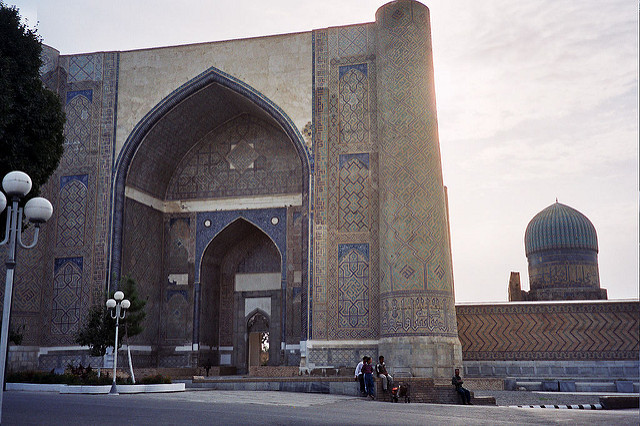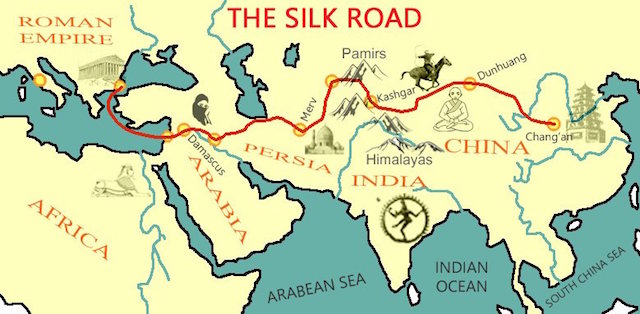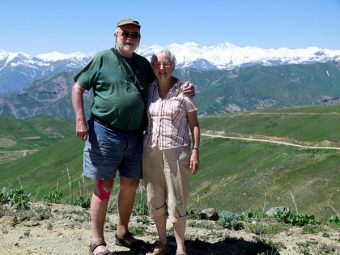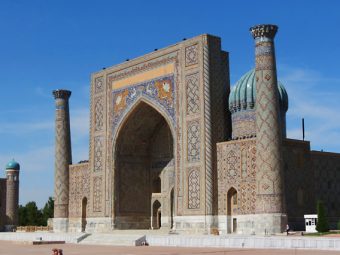Everyone has a picture in their mind about what the Silk Road must have looked like in the past… now, it’s time to put the misconceptions aside and get to know the most interesting Silk Road facts.
The Route. Photo Credit: 500.co
– The trade route got its name Silk Road (or Seidenstraße) from Ferdinand von Richthofen, a well-known German geographer in 1877.
– The Silk Road is on the list of protected UNESCO World Heritage Sites; there are also 33 historical sights to see along the route.
– Whereas the most common conception is that traders mostly used camels to travel and transport all their goods, this is not in fact true; merchants preferred to use donkeys and horses because they are much more comfy to ride and they could draw carts, too (which was great hauling large quantities of product.)
– Traders travelled in large caravans for safety; a couple of them would coordinate their routes so they could go together, since the majority of merchants had no means to pay for armed escorts.
– The total length of the Silk Road is 6400 km.
– The “Golden Age” of the Silk Road (during the 13th and 14th centuries) was when the routes were under the control of the Mongol Empire. It is under their rule that commerce along the Silk Road became secure and stable. The name used for this period is “Pax Mongolica.”
– The most famous international traveller who reached the Silk Road was Marco Polo from the Republic of Venice. He was a merchant who virtually showed Europeans Central Asia and China. According to his own accounts, he worked for almost twenty years for Kublai Khan, the Mongol ruler.

– The Silk Road in China flourished most during the Tang Dynasty, from 618–907 C.E. It is during this time that there was a huge mingling between cultures and religion.
– During the Han Dynasty, they lengthened the Great Wall of China in order to protect routes running into – and out of the region.
– Many theories believe that the bubonic plague was brought into Europe via the Silk Road. They say this happened due to items of clothing and textiles that came from Central Asia; they contained plague-bearing flea eggs that then hatched and infected rats and then moved onto people.
– The largest cities along the Silk Road were Xian (China); Kashgar (Xinjiang Uyghur Autonomous Region, located just in halfway along the route); Samarkand, Bukhara and Khiva (all of them in Uzbekistan); Merv and Kunya- Urgench (both in Turkmenistan).

– Duing the 14th century, the popularity of the Silk Road as a trade route diminished due to better ship building techniques (making transport via water more safe) and sea routes that provided a more practical way to transport products.
– The Silk Road spurred multicultural collaboration and helped with the spread of new religions, languages and cultures into territories where they were previously unknown.





Leave a Reply